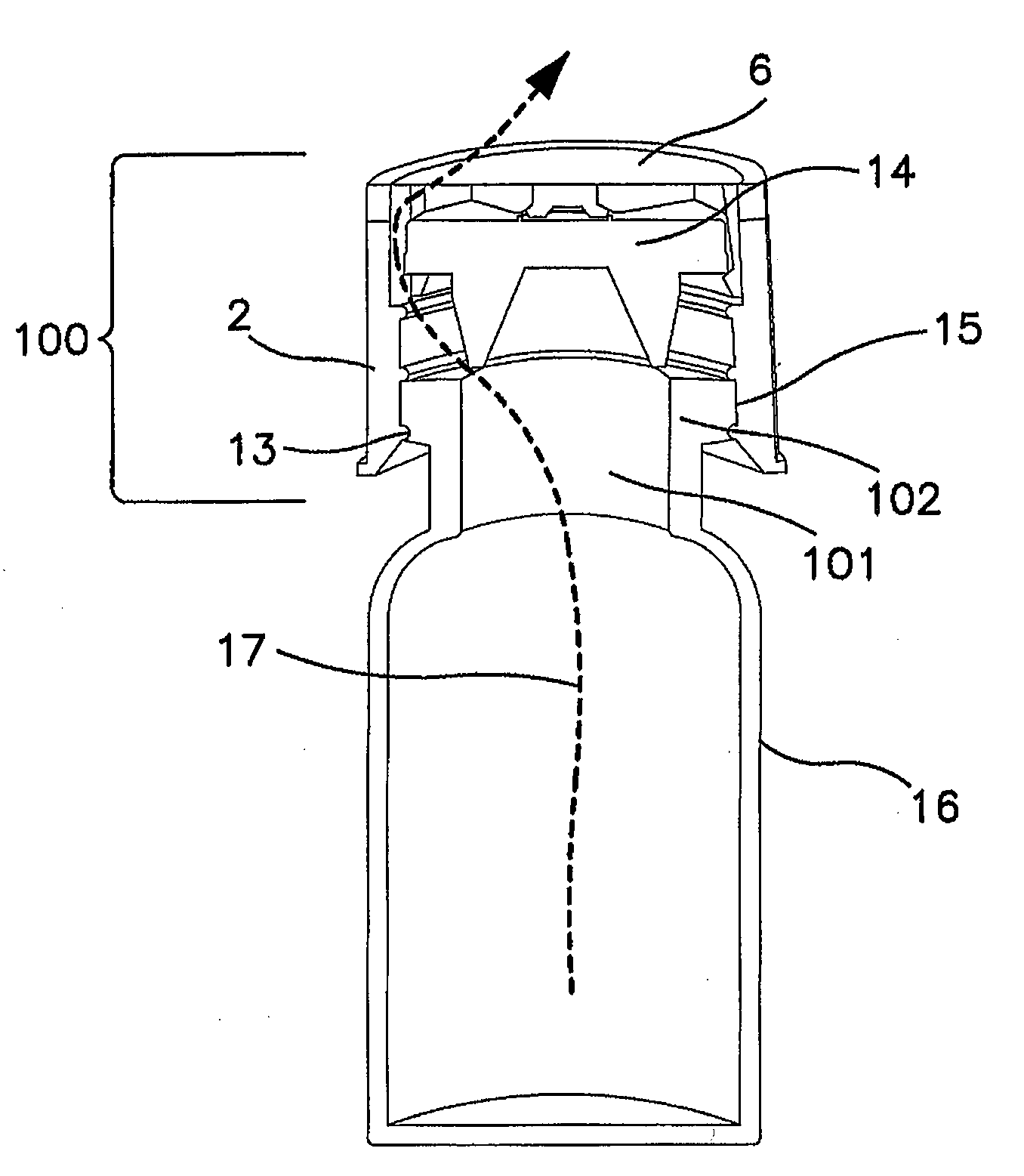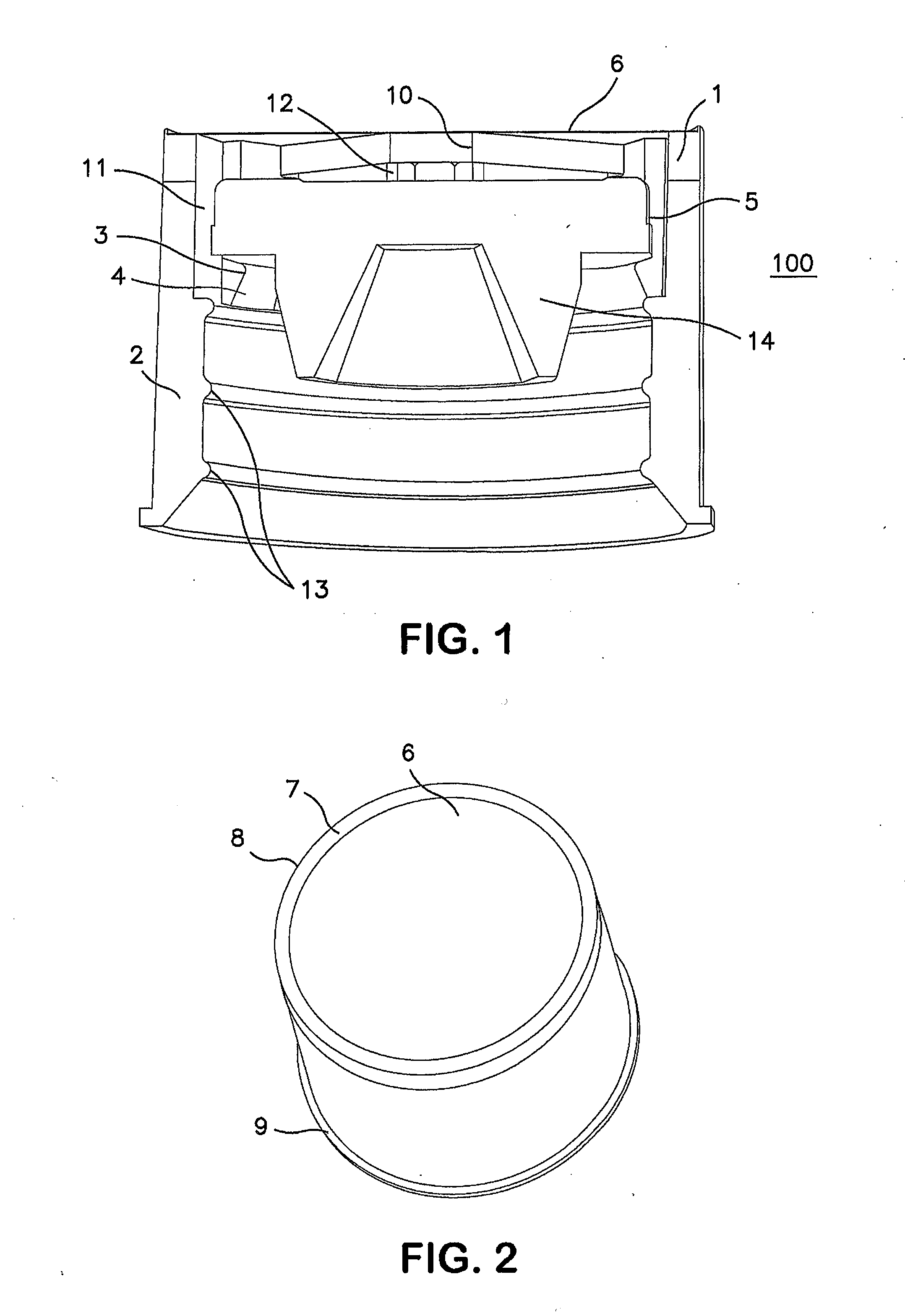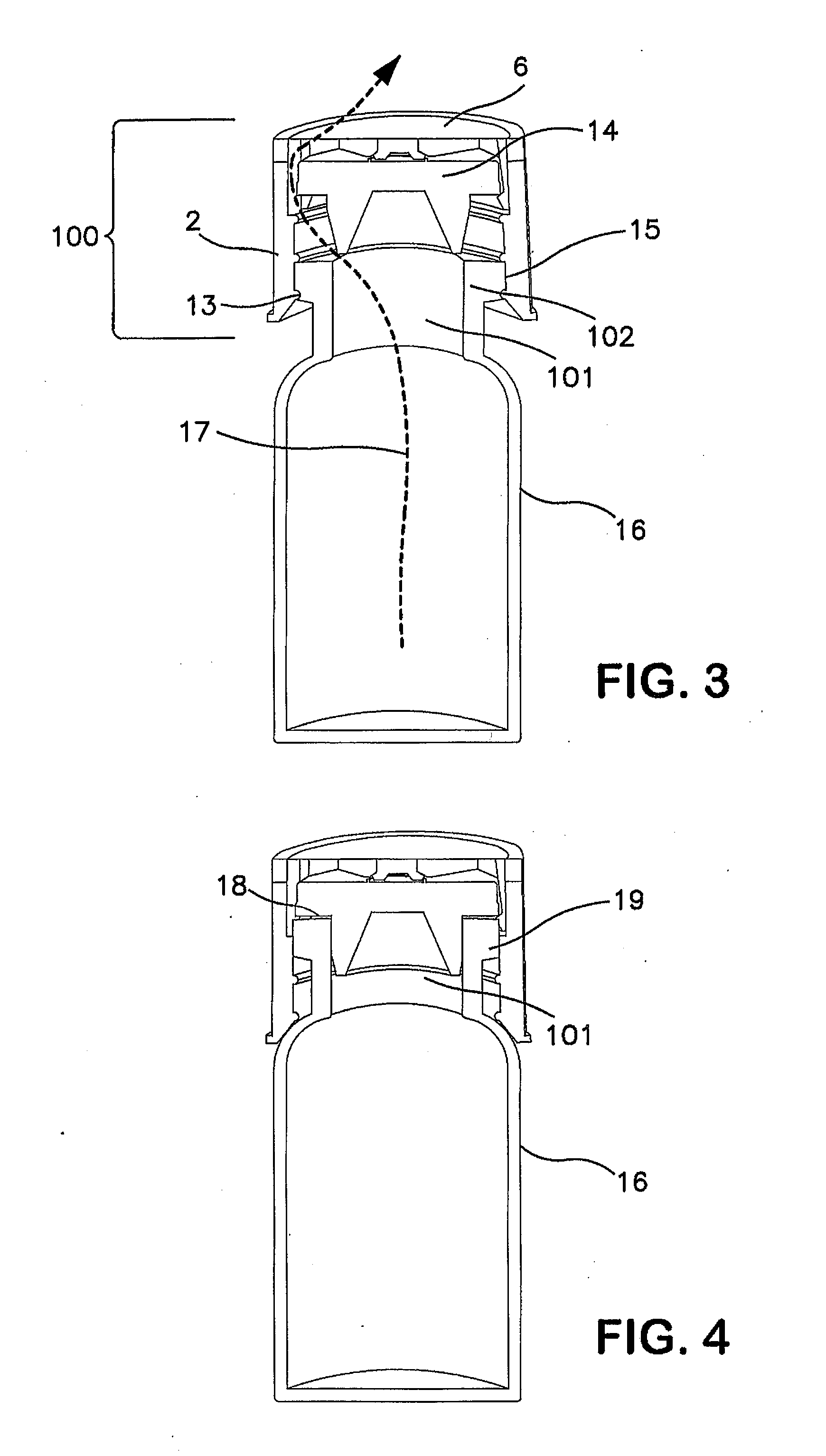Processing Cap Assembly for Isolating Contents of a Container
a processing cap and container technology, applied in the field of cap assembly for venting and isolating containers, can solve the problems of contamination, high cost of freeze-drying equipment, cross-contamination of different batches of products at the same time, etc., and achieve the effects of preventing contamination (of products, workers, equipment), reducing re-validation requirements, and reducing the possibility of contamination
- Summary
- Abstract
- Description
- Claims
- Application Information
AI Technical Summary
Benefits of technology
Problems solved by technology
Method used
Image
Examples
example 1
[0095]A two-part, or “two-shot” cap assembly of the present invention with a geometry substantially as shown in FIGS. 1-5 was formed in the following manner.
[0096]A mold was created to provide a cap assembly with the geometry of the part described below. The mold comprised two halves, an “A” side and a movable “B” side, and the rigid housing component was first molded from PRO-FAX 6323® polypropylene resin (Montell Polyolefins, Wilmington, Del.). The polypropylene housing had the general shape of a ring with an outside diameter of about 0.92 inches (23.4 mm), an inside diameter of about 0.74 inches (18.8 mm), and a height of about 0.29 inches (7.37 mm). Vent slots were located in the inner wall at 45°, 135°, 225°, and 315° to a depth of about 0.036 inches (0.914 mm). Crossbars measuring 0.100 inches (2.54 mm) wide and 0.080 inches (2.03 mm) thick were oriented at the top of the part at 0°, 90°, 180°, and 270° for supporting the venting media and providing a stop against which a stop...
example 2
[0103]A two-part, or “two-shot,” cap assembly of the present invention was formed as described in Example 1.
[0104]The venting media to be attached to the cap assembly was a laminate (labeled “B”) of an ePTFE membrane having a reference pore size of 1.0 micron (W. L. Gore and Associates, Inc., Elkton, Md.) bonded to a non-woven polyester material (Part Number B3005, HDK Industries Inc., Rogersville, Tenn.). Material B had the following measured laminate properties: Gurley 0.8 seconds, water entry pressure (WEP) of 39.4 psi, a thickness of 9 mils, and a bubble point of 11.2 psi. The laminate was cut using a hand punch measuring 0.94 inches (23.8 mm) in diameter. It was then adhered to the cap using a ring (0.94 inches (23.8 mm) O.D., 0.81 inches (20.6 mm) I.D.) of double sided silicone adhesive (Specialty Tapes, part number D650).
[0105]Serum stoppers (West Pharmaceuticals, part number 19500080) were then inserted into the caps so that they were held tight by dimple 3. Vials (Part No. ...
example 3
[0107]A single-part, machined cap assembly of the present invention with a geometry substantially as shown in FIG. 6 was formed in the following manner.
[0108]A polypropylene rod measuring about 1 inch (25.4 mm) in diameter was cut to a length of about 0.7 inches (17.8 mm), and the rod was machined to hollow out the interior, creating a cap with an inside diameter slightly smaller than 0.78 inches (19.8 mm), which is slightly smaller than the outside diameter of a rubber stopper (Part No. 19500080, West Pharmaceutical Services, Inc., Lionville, Pa.), which allowed the cap to grip and hold the outside surface of the stopper. Vent slots were cut at 0°, 90°, 180°, and 270° into the cap to allow for venting around the stopper, and a through-hole measuring 0.60 inches (15.24 mm) was machined into the center of the cap to provide more venting area above the stopper. The venting media was attached over this through-hole. A chamfer was then machined into the bottom of the cap to accommodate ...
PUM
 Login to View More
Login to View More Abstract
Description
Claims
Application Information
 Login to View More
Login to View More - R&D
- Intellectual Property
- Life Sciences
- Materials
- Tech Scout
- Unparalleled Data Quality
- Higher Quality Content
- 60% Fewer Hallucinations
Browse by: Latest US Patents, China's latest patents, Technical Efficacy Thesaurus, Application Domain, Technology Topic, Popular Technical Reports.
© 2025 PatSnap. All rights reserved.Legal|Privacy policy|Modern Slavery Act Transparency Statement|Sitemap|About US| Contact US: help@patsnap.com



